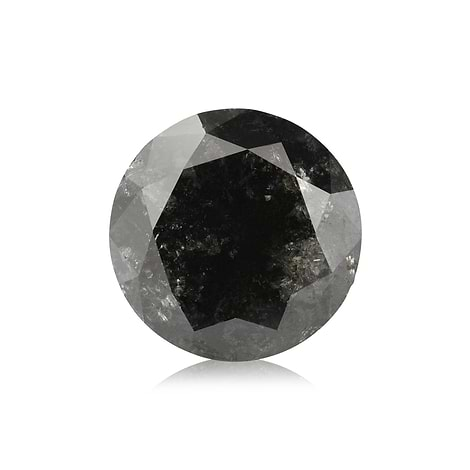Diamonds may look pretty, and have developed a reputation of luxury, but these beautiful gemstones actually possess a fascinating chemical form as well. Understanding your diamond and the structure of these stones may help you develop a bit more of an appreciation for these rare and glamorous stones.

Fancy Deep Blue Oval Shaped Diamond
Often referred to as the hardest natural substance on earth, let us take a further look inside a diamond in order to understand its build, and the implications there may be for diamond consumers.
The Structure of a Diamond
The shine and brilliance of diamonds are the core reasons for this stone's popularity and for how it has almost become synonymous with prestige and royalty. However, there are scientific reasons why this natural stone has this unusual luster as well as why it is also so tough and durable. Mother Nature has infused some of the most magnificent combinations of elements to form something that is not just magnificent, but also, practically indestructible.
Made from carbon atoms that are arranged in a tetrahedral shape, diamonds have a three-dimensional structure. Because each carbon atom has four electrons, which connect to four electrons of another carbon atom, a diamond becomes extremely sturdy and difficult to destroy.

A beautiful fancy vivid yellow, radiant shaped diamond
The joining of the carbon atoms, formed from multiple electrons, result in a crystal-like object that is mysteriously solid. The pairing of these two atypical attributes makes diamonds especially desired and valued. Diamonds also contain covalent bonds within the stone, which essentially help bond the diamond to one form. These many bonds make the diamond incredibly durable.
The tetrahedral form doesn't only affect the strength of the stone, but is also responsible for the stone's shine. This specific shape leaves spaces in the bonds for light to come through, which is then reflected when it hits a carbon atom, resulting in the unique brilliant sparkle that is exclusive to diamonds. Granted, the cut of the stone will only enhance the brilliance by enabling the light to reflect between the facets, but the stone itself shines as a result of the crystal-like structure.
The Implications of a Diamond's Sturdiness
Most people who know at least something about diamonds know about its unusual sturdiness. This may be understood as being completely indestructible, but that is a complete misconception. Sure, for most intents and purposes, diamonds are considered extremely strong, but when displayed as a rather small object, such as a 1-carat diamond ring, it would be more than unwise to hit it against a brick wall. Will it shatter into millions of pieces? No, it won't; but it might chip. Though you can salvage a chipped diamond, it will bring down the value of the stone drastically. The sturdiness of a diamond and its resistance to scratches varies greatly depending on the crystalline perfection and the purity of the diamond. For instance, diamonds with a lower clarity level, which are also considered less hard, can be scratched by boron nitride, whereas a flawless diamond, which is much harder, can only be scratched by another diamond.

A natural fancy colored pink diamond
Diamond Hardness Vs. Toughness
The hardness of a diamond should not be confused with its toughness. The latter term refers to its ability to withstand the impact of severe force. While diamonds still do rather well in this department, ranking 7.5 to 10 MPa•m1/2, it pales in comparison to materials such as alloy, used for engineering, which generally ranks over 100 MPa•m1/2. Some diamonds are tougher than others, and that is why it is so important to have it cut by an experienced diamond cutter. The toughness of a diamond is also a great way to differentiate a real diamond from a synthetic one.

fancy intense blue, cushion shaped diamonds
Knowing a bit more about the makeup of your stone will help you have a wider understanding of your diamond and the process it has been through. Never take your diamond's sturdiness for granted and treat it the way a valuable and rare specimen deserves to be treated. The price you paid got you this durable, remarkable stone, but the way in which you care for it will ensure that it will remain by your side, forever.














